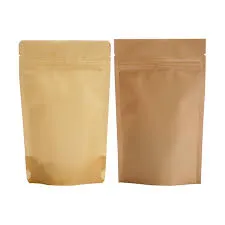- Afrikaans
- Albanian
- Amharic
- Arabic
- Armenian
- Azerbaijani
- Basque
- Belarusian
- Bengali
- Bosnian
- Bulgarian
- Catalan
- Cebuano
- chinese_simplified
- chinese_traditional
- Corsican
- Croatian
- Czech
- Danish
- Dutch
- English
- Esperanto
- Estonian
- Finnish
- French
- Frisian
- Galician
- Georgian
- German
- Greek
- Gujarati
- haitian_creole
- hausa
- hawaiian
- Hebrew
- Hindi
- Miao
- Hungarian
- Icelandic
- igbo
- Indonesian
- irish
- Italian
- Japanese
- Javanese
- Kannada
- kazakh
- Khmer
- Rwandese
- Korean
- Kurdish
- Kyrgyz
- Lao
- Latin
- Latvian
- Lithuanian
- Luxembourgish
- Macedonian
- Malgashi
- Malay
- Malayalam
- Maltese
- Maori
- Marathi
- Mongolian
- Myanmar
- Nepali
- Norwegian
- Norwegian
- Occitan
- Pashto
- Persian
- Polish
- Portuguese
- Punjabi
- Romanian
- Russian
- Samoan
- scottish-gaelic
- Serbian
- Sesotho
- Shona
- Sindhi
- Sinhala
- Slovak
- Slovenian
- Somali
- Spanish
- Sundanese
- Swahili
- Swedish
- Tagalog
- Tajik
- Tamil
- Tatar
- Telugu
- Thai
- Turkish
- Turkmen
- Ukrainian
- Urdu
- Uighur
- Uzbek
- Vietnamese
- Welsh
- Bantu
- Yiddish
- Yoruba
- Zulu
Creating Effective Labels for Wholesale Products to Boost Sales and Brand Recognition
Understanding Wholesale Product Labels Importance and Guidelines
In the world of wholesale products, labels play a vital role in connecting manufacturers, wholesalers, retailers, and ultimately, consumers. Effective labeling not only conveys essential information about the product but also influences buying decisions. Understanding the elements and significance of wholesale product labels can empower businesses to optimize their marketing strategies and ensure compliance with regulatory requirements.
The Importance of Wholesale Product Labels
Wholesale product labels serve several critical functions. Firstly, they provide necessary information about the product, including its name, ingredients, quantity, and usage instructions. This information is crucial for retailers and consumers alike, enabling informed purchasing decisions.
Secondly, labels help in branding. A well-designed label can enhance product visibility, making it stand out on crowded shelves. It reflects the brand's identity and values. For businesses operating in the wholesale sector, a compelling label can improve sales performance and build customer loyalty.
Additionally, labels ensure regulatory compliance. Many countries have strict labeling guidelines that mandate the inclusion of specific information, such as nutritional facts, safety warnings, and manufacturing details. Adhering to these regulations is essential, as non-compliance can result in legal ramifications and damage to a brand's reputation.
Key Elements of Wholesale Product Labels
1. Product Name The name should be clear and easy to read, accurately describing the product. 2. Ingredients List For food and cosmetic products, a complete list of ingredients is essential. This transparency helps customers with dietary restrictions or allergies make safe choices. 3. Quantity Including net weight or volume is necessary, providing consumers with an understanding of how much product they are purchasing.
5. Usage Instructions Clear instructions on how to use or apply the product can significantly enhance customer satisfaction and reduce returns.
wholesale product labels

6. Contact Information Providing details such as the manufacturer’s contact information promotes trust and allows customers to reach out with questions or concerns.
7. Barcodes or QR Codes These elements facilitate inventory management and improve the shopping experience by enabling customers to obtain more information through scanning.
Best Practices for Designing Wholesale Product Labels
1. Clarity and Simplicity Labels should be easy to read and understand. Avoid overwhelming consumers with excessive information or complicated jargon.
2. Visual Appeal Use colors, fonts, and graphics that reflect the brand’s identity while ensuring the label is visually appealing. High-quality images can help attract customers.
3. Compliance Check Always verify that your labels meet local and international regulatory requirements. This step is crucial in avoiding potential legal issues.
4. Testing and Feedback Before finalizing a label, consider conducting focus groups or surveys with potential customers. Their feedback can provide valuable insights into what works and what doesn’t.
5. Adaptability Be prepared to update your labels in response to changes in regulations, market trends, or consumer preferences. Keeping labels current shows that your brand is attentive and responsive.
In conclusion, wholesale product labels are much more than mere adornments; they are essential tools for information dissemination, branding, and compliance. By understanding their significance and adhering to best practices in design and content, businesses can enhance their products' marketability and ensure they meet customer needs effectively. In an increasingly competitive marketplace, well-crafted labels can be the difference between a product that gets noticed and one that fades into the background.













